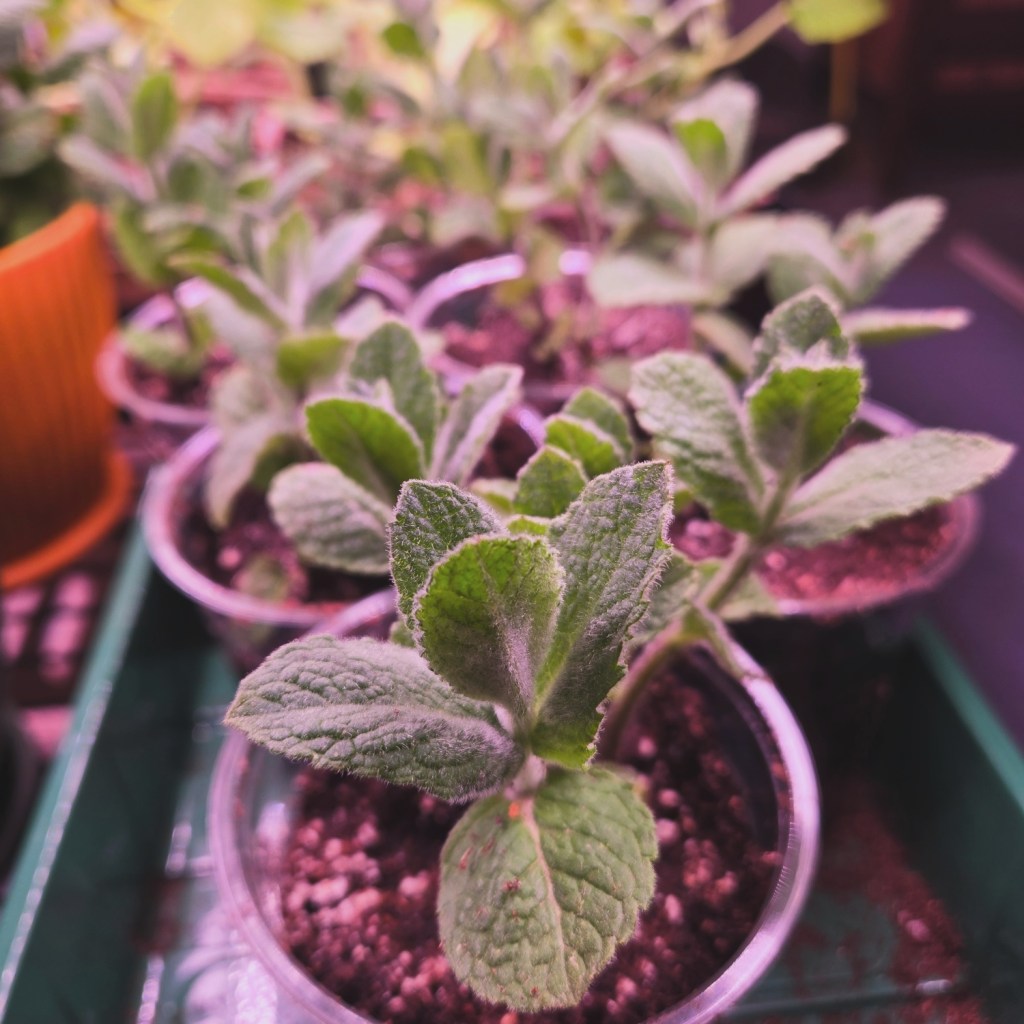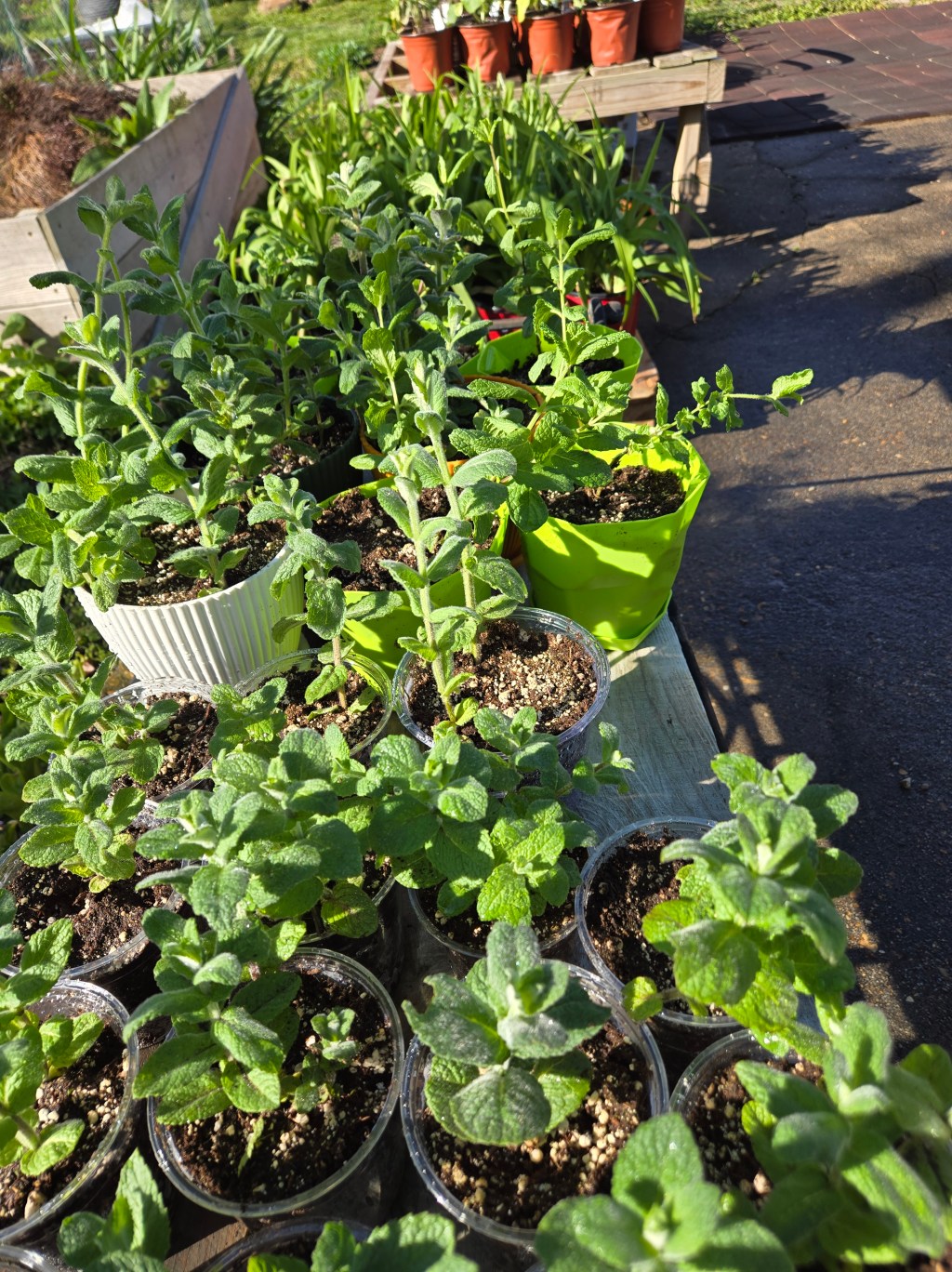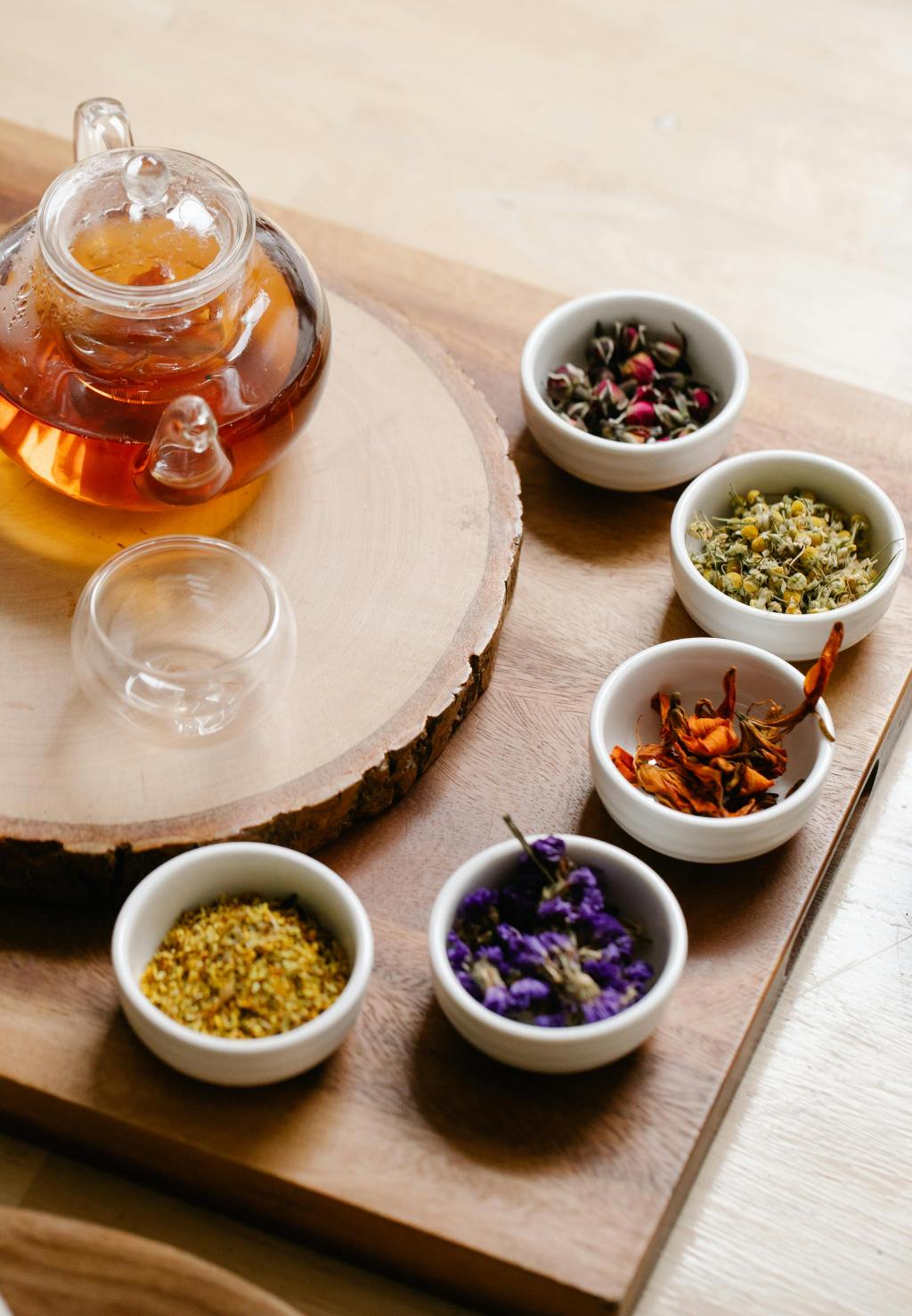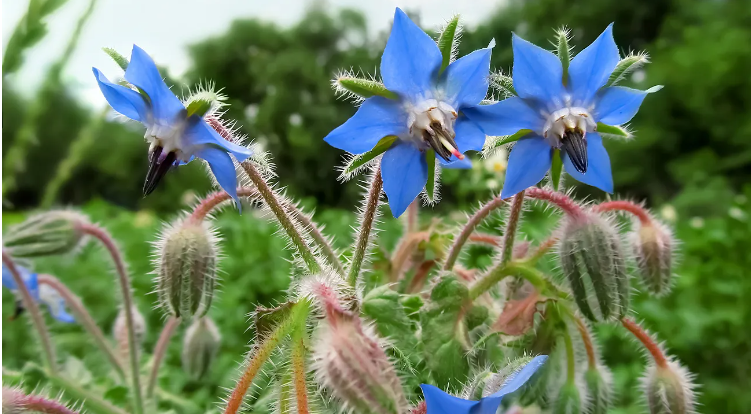Mint is one of our favorites herbs. It’s nice to walk outside after the mint has been watered, or just after a rain, and smell the mint in the air. Mint is an easy herb to grow, and it has lots of benefits:
- It’s rich in nutrients.
- It can improve digestion.
- It can help treat IBS.
- It fights infections, so it’s great for treating colds.
- It can boost your immunity.
- It can help with allergy symptoms.
- It’s a natural cure for breastfeeding pain.
- It promotes oral health (there’s a reason your toothpaste is minty).
- It’s a natural anxiety and stress reliever.
- It can promote brain function.

Mint is also easy to work into your diet. You can pick fresh leaves to wash and add to a salad. We love adding them to a pitcher of lemonade. You can also chop them and add them to jams and jellies or even a fruit salad.
Mint is a very forgiving plant so don’t worry about picking too much. If you cut the leaves close to the stem, new stems will form. It also grows very fast and thrives in the sun or shade. It likes a rich, moist soil that has good drainage and is high in organic matter, but once established, again it can be very forgiving when it comes to the makeup of your soil.
Although it thrives in the garden, mint can be very invasive. We’ve planted it in some of our flower beds and it definitely spreads out over time. It doesn’t crowd out other plants and doesn’t seem to hinder their growth, but don’t be surprised to find shoots growing up through the middle of other plants like ferns and hosta.
Once it’s established, it can also be hard to get rid of, so consider the long-term permanent placement of the bed before you plant it in the ground. If unchecked and left alone, some shoots can grow as much as two feet tall before flowering.
For these reasons alone, you might want to consider restricting your mint plant to a large flower pot only so that you can control how much it spreads. It will flower late in the summer and bees love it. Cutting it back in the winter won’t hurt it, but depending on your zone, and if you have a heavy winter, you might want to move the flower pot indoors during the colder months.
Most mints are a perennial in Zones 4 through 9, so you can enjoy it year after year without having to replant it.



Leave a comment